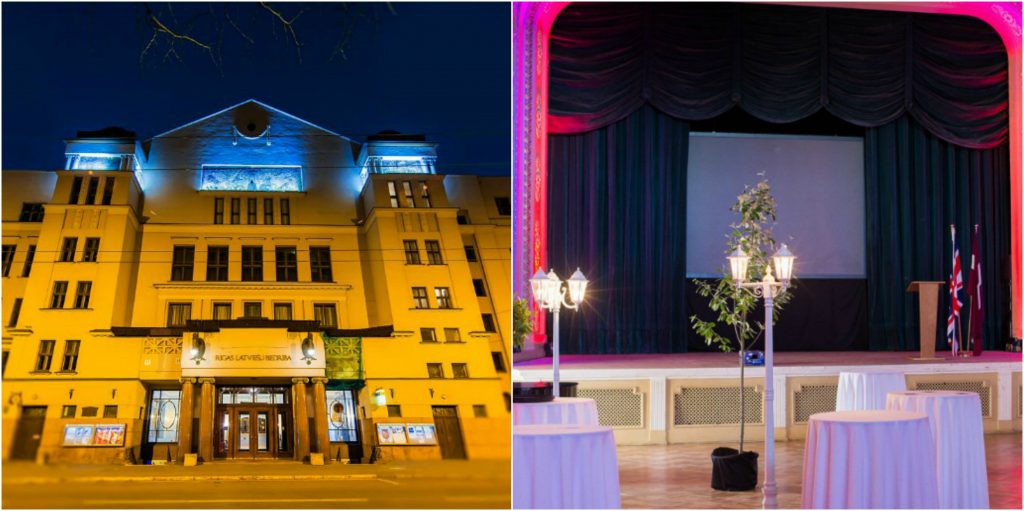Thursday, 22 June, 19.00-23.00
Riga Latvian Society House Grand Hall
Merķeļa iela 13, Riga
Bus: #3 In the direction of ‘Plavnieki’; destination stop ‘Merkela iela’; #21 In the direction of ‘Jugla 3’; destination stop ‘Merkela iela’.
The Riga Latvian Society House (Rīgas Latviešu biedrības nams) was the first building in Riga built in the neoclassical style. The facade is distinguished by polished granite columns with small ionic capitals in portals and the clarity of classical forms throughout.
The asymmetric architectonic image also reflects some characteristics of German Art Nouveau. The decorative panels were created by the famous Latvian artist, Jānis Rozentāls, in a complex and colourful mosaic art technique. Displayed in the centre are allegorical images from Latvian folklore – Pērkons (God of Thunder), Potrimps (the helpmate of the God of Thunder) and Pīkols (God of Destruction and Death) – which symbolise cultural values – beauty, strength and wisdom. The compositions on the avant-corps, ‘The Greeting of the Sun’ and ‘By the Spring’, symbolise ways of achieving these goals – Art, Science, Agriculture and Industry.
The Riga Latvian Society was founded in 1868 and is the oldest officially-founded Latvian organisation. Its history, however, began in the first half of the 19th century, when intellectuals of the first Latvian National Awakening joined forces to unite the Latvian nation in a city traditionally governed by Baltic Germans. The Riga Latvian Society had an important role in establishing the Republic of Latvia in 1918.

Rīgas Latviešu biedrības nams